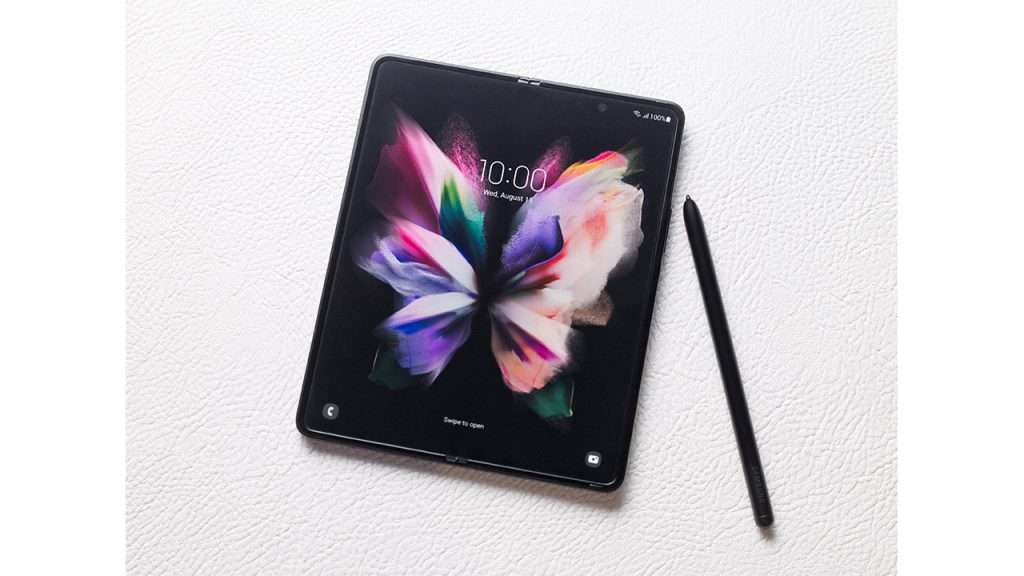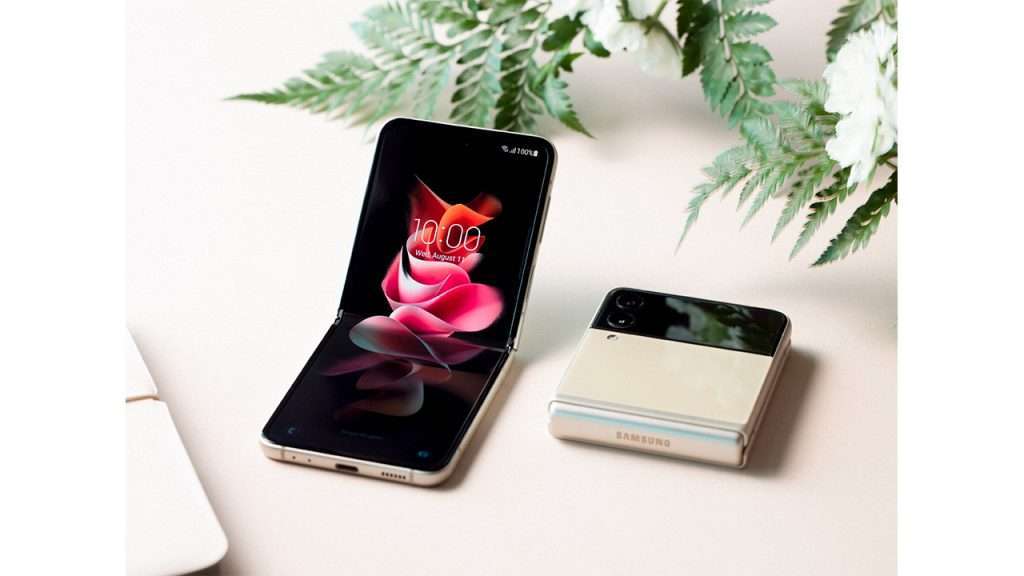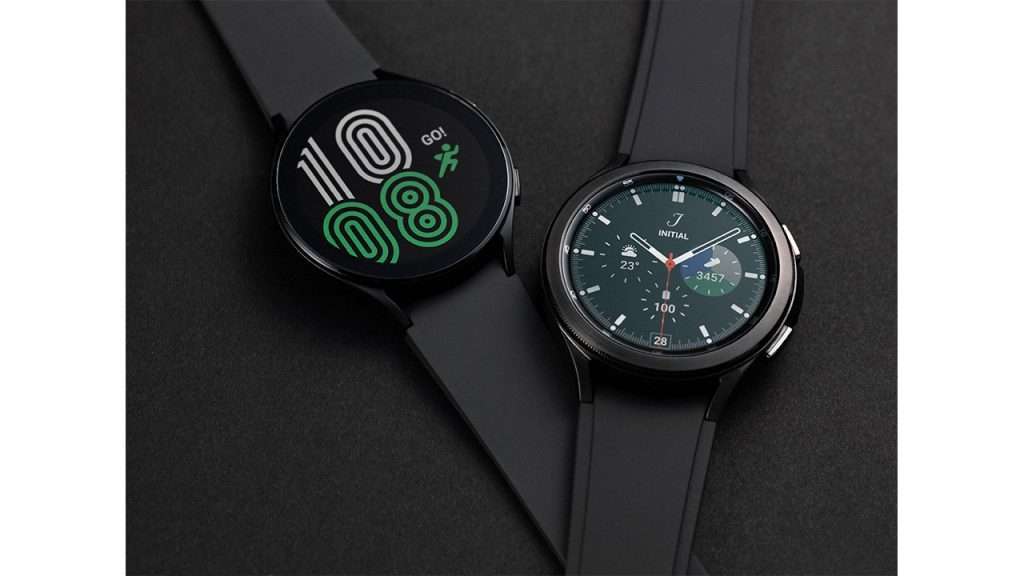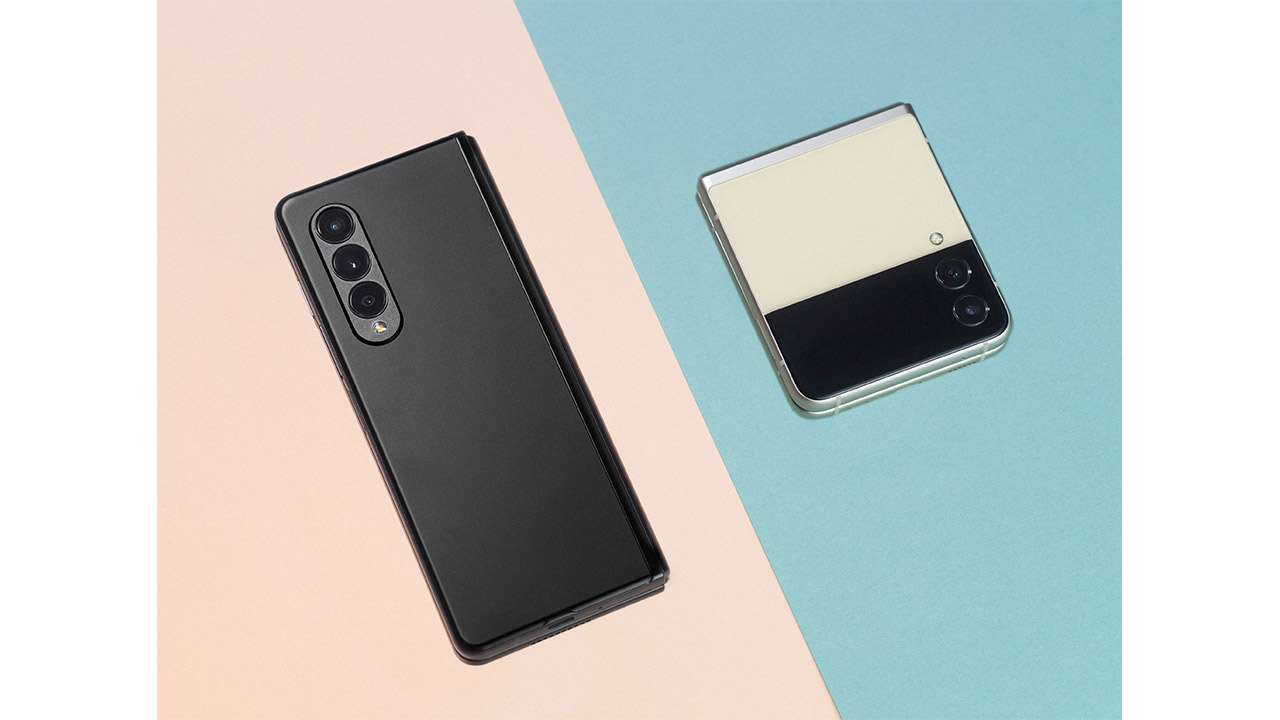Samsung announced five new devices going on sale later this year.
Samsung, convinced that foldable devices are a growing market, is doubling down on making folding phones desirable. The new Galaxy Z Fold3 5G and Galaxy Z Flip3 5G have impressive new features and, importantly, will be $700 cheaper than their predecessors – while boasting improved specs.
The new Galaxy Watch4 and Galaxy Watch4 Classic look very similar to their predecessors, but there’s an important new update here too. Samsung is moving its watches over to Wear OS as the two companies (Google and Samsung) promise a close-working partnership for the collaborative operating system. No more having to decide between Tizen and Android Wear.
And there’s also the Galaxy Buds2. Not much different here, they’re just smaller than the Buds Pro.
We got a hands-on preview of these five devices and while our time was relatively short, below is a quick “what you need to know” about Samsung’s new phones, wearables and “hearables” and what we thought about them.
Galaxy Z Fold3 5G
This phone will retail for $2,699 and, it’s slimmer, sleeker and lighter than its predecessor.
The inside is where Samsung has made most of its improvements.
The Z Fold3 has a 7.6-inch, 120Hz, uninterrupted Infinity Flex Display that’s 29% brighter than the Fold2. It also boasts a 120Hz front display as well.
On the main screen, the Fold3 utilises under-display camera technology that applies pixels over the top of the camera hole, hiding it when you’re watching videos or using apps. This gives you an uninterrupted view of your phone. It works well. It took someone telling me about this technology for me to notice there was a camera on the screen at all – though once you know where to look, the punch-hole camera is more “disguised” than completely “hidden”.
The Fold3 will also be compatible with the Samsung S-Pen, the first device in the Galaxy Z series capable of doing that. I’m not an S-Pen user, so the S-Pen functionality wasn’t a big deal for me. However, when folded out the Fold3 is more similar to a Samsung Note than an S21, and S-Pen users tend to prefer larger screens. They’ll be right at home using an S-Pen with the Fold3. There will also be accessories and cases released for the Fold3 that will be able to hold the S-Pen.
As a relative newcomer to the Samsung Fold phones, I really liked the Fold3. For a foldable phone, it was light and although of course, when folded, is thicker than a non-folding phone, it still sat nicely in my pocket.
I particularly enjoyed the Fold3 allowing me to have multiple tasks open on each side of the screen. The Fold3 has a vertical hinge/fold which can split the full display into two smaller displays. I could be watching a YouTube video on the left side of the screen and simultaneously scroll through the list of recommended videos on the right.
Alternatively, I could have my calendar open on the right side of the display and have my text messages open on the left side (for example). It’s seamless and makes multitasking easier.
Overall, I’m looking forward to using the Galaxy Z Fold3 5G – it feels unique and is different from the same old devices we get each year.
Samsung’s Galaxy Z Fold3 5G will be available for pre-order on the 12th of August and will go on sale early September.

Galaxy Z Flip3 5G
The Galaxy Z Flip3 5G is the other phone we got our hands-on.
This is a sequel to the Galaxy Z Flip. Samsung skipped Z Flip2 and went directly to Z Flip3, just because…
This is a hip, trendy device that comes in funky colours and has vibrant Samsung-designed cases and finger grips.
It has a 120Hz adaptive refresh rate display and it’s main point of difference is its Flex mode.
The Flip3’ hinge/fold is horizontal, making it look more like a traditional smartphone when open.
The design allows the phone to be set down with the top half of the phone folded up, laptop-esque. Its great for taking selfies, group photos or making a video call as the bottom half of the phone acts as a tripod or stabiliser.
There isn’t much difference between the Flip and the Flip3 other than the latter coming with a 4x larger cover screen. This screen allows you to see notifications, skip songs on Spotify without having to flip the device fully open.
You can also use it as a viewfinder to take selfies and videos. With a double tap of the power button, the front display will show you what your camera is seeing so you can quickly snap a selfie.
Samsung is also expanding its relationships and partnerships with major organisations like Google and Microsoft to ensure their apps are optimised for their foldable devices, the Fold3 and Flip3. For example, Microsoft Teams will allow you to see the person talking on the top half of the Flip3 while taking notes on the bottom half.
I’m still not fully convinced about the Flip3, though. For $1,599 it’s similarly priced to the Samsung S21 and I’m not sure choosing this over the excellent S21 makes sense. The only area where I can see it being more beneficial is pocket space, or screen protection as when it’s folded up the screen won’t get scratched.
The Flip3 will be available for pre-order on the 12th of August and will go on sale early September.

Galaxy Buds2
I only got to see, and touch, the Galaxy Buds2 (I wasn’t allowed to put them in my ears).
I was, however, told a bit about them and had my questions answered by Samsung’s local expert and product “trainer”.
The Galaxy Buds2 will retail for $279 and come with three levels of ambient sound. Samsung claims they have active noise cancelling capabilities that, Samsung claims, “will cancel 98% of outside noise”.
Though, I’m not convinced percentage is a meaningful metric for noise.
The Buds2 are the smallest and lightest earbuds Samsung has produced and they have a very similar shape to the previous Samsung earbuds.
An area I’m particularly interested in is the new “earbud fit test” that Samsung has developed. Samsung informed us that the new test will play sound into your ears and use the in-built microphones to figure out if outside noise is leaking in, and then advise you how to fit the Buds2. Not many earbuds have a comprehensive fit test like this (apart from the AirPods Pro and AirPods Max) so I’m excited to see if it works well.
Galaxy Watch4 & Galaxy Watch4 Classic
The only differences between these two watches are their design and prices – they both offer the same set of features.
The Watch4 Classic boasts a rotating bezel and will retail at $600 for the Bluetooth version and $700 for the LTE model.
The Watch4 doesn’t have a rotating bezel and will retail at $250 for the Bluetooth version and $300 for the LTE version.
The biggest change here is the new operating system (for Samsung’s smartwatches). Samsung has replaced its own Tizen OS with, with Wear OS, an operating system “powered by Samsung” and built collaboratively with Google. I asked for more information on how this partnership will work and was told that the value Samsung would be bringing is its “hardware” expertise.
Wear OS will bring a brand new UI called One UI and promises to host lots of new features and functionality. The UI looks simple to navigate and, importantly for Samsung, has a much larger range of compatible apps compared to Tizen.
The Watch4 has a new 3-in-1 sensor that senses Optical Heart Rate, Electrical Heart and Bioelectrical Impedance Analysis. This allows the watch to monitor blood pressure, irregular heartbeats, blood oxygen level, calculate body composition (body fat) and much more.
This is the first Samsung wearable that can measure body composition. It will work by instructing users to place their fingers on two sensors for 15 seconds, the watch will create 2,400 data points about your body and from here you can measure skeletal muscle, metabolic rate, body fat percentage and much more. The accuracy of features such as body fat will be interesting to test, as it’s a complicated calculation to get right from such a small sample area (your wrist).
You’ll be able to use Google Maps and Google Pay with the Watch4 and it will now sync with your device. Apps installed on your phone will be immediately installed on your watch, and important items like alarms and blocked callers will cross over as well. This is an area that’s significantly more helpful than older Samsung watches.
And of course it performs better. This is the first Galaxy Watch to have a 5nm processor. Scrolling and multitasking is fast and navigating the device should be smoother. It also has a 450 x 450-pixel screen and 16GB of memory.
Samsung claims that the Watch4 will support up to 40 hours of battery life and 30 minutes charge will provide up to 10 hours of battery life.
The Galaxy Watch 4 and Watch 4 Classic will be available for pre-order on August 12th and will go on sale on September 10th.


